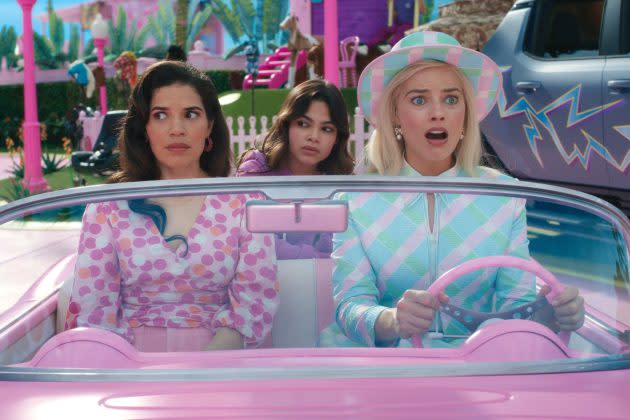Speaking Roles for Female Characters and Women Over 60 Declined in 2023’s Top-Grossing Films, New Study Shows

A new study indicates that the tenets that contributed to “Barbie’s” $1.4 billion box office success and pop culture dominance — namely featuring a female-led ensemble — was the exception rather than the rule in Hollywood this year. Outside of Barbieland and a handful of other movies that were fronted by female characters, there was decreasing opportunity for women in film in 2023.
The latest “It’s a Man’s (Celluloid) World” report from Dr. Martha Lauzen, executive director of the Center for the Study of Women in Television and Film at San Diego State University, found that in 2023, only 18% of the 100 top-grossing films featured more female than male characters and 5% of films had equal numbers of female and male characters. This meant that a whopping 77% of movies had more male than female characters in speaking roles.
More from Variety
Film Criticism Continues to Be Dominated by Men, Study Shows
Only 7% of Movies in 2021 Featured More Women than Men, Study Finds
“Because ‘Barbie’ claimed so much of our cultural space in 2023, female characters may have seemed more abundant in films last year,” stated Lauzen summarizing the study’s findings. “But the overall percentage of female characters in speaking roles contracted, as did the percentage of female protagonists.”
This year’s study analyzes 2,200 characters appearing in the 100 top-grossing films and provides historical comparisons dating back to 2002, when Lauzen’s team began tracking the representation of female characters.
Researchers found that the percentage of women in speaking roles declined from 37% in 2022 to 35% in 2023 (0.1% of all speaking characters were transgender), while the percentage of films with (sole) female protagonists contracted from 33% to 28%. (This figure remains well below the 40% peak achieved in 2019 and has dipped slightly below the percentage calculated in 2016.)The number of female characters in major roles remained stagnant at 38%.
The study also showed that female characters were younger (primarily in their 20s and 30s) than their male counterparts (who were more likely in their 30s and 40s). The percentage of female characters declined dramatically from their 30s (30%) to their 40s (13%), while male characters didn’t see a decrease until they reached their 50s.
“The population of female characters contracts significantly at about the age of 40,” Lauzen noted. And despite performances by Jane Fonda, Diane Keaton and Rita Moreno in films like “80 for Brady” and “Book Club: The Next Chapter,” roles for actresses over 60 are few and far between. “This age cohort comprised only 7% of all females in the top grossing films of 2023, well below their representation in the U.S. population,” Lauzen continued. “Limiting the age of female characters also limits their ability to age into positions of personal, political and professional power.”
Regarding race and ethnicity, the percentage of Asian and Asian American females increased from 8.1% in 2022 to 9.2% in 2023 and Native American characters increased to 0.6%, up from 0.0% in 2022. Percentages for white (56.9%, down from 64.2%), Black (15.3%, down from 18%) and Latina (6.3%, down from 6.9%) female characters decreased proportionally. Marital and occupational status are also tracked in the study, as well as women’s roles as leaders.
The study also considers the impact that having women behind the camera has on on-screen representation. As was the case with “Barbie,” which was co-written and directed by Greta Gerwig, “Priscilla” from Sofia Coppola and “Past Lives” from Celine Song, films with at least one woman director and/or writer were more likely than films with exclusively male filmmakers to feature higher percentages of females as protagonists (48% in comparison to 19%), in major roles (48% versus 33%), and as speaking characters (43% versus 31%).
The full study can be found here.
Best of Variety
Sign up for Variety’s Newsletter. For the latest news, follow us on Facebook, Twitter, and Instagram.
